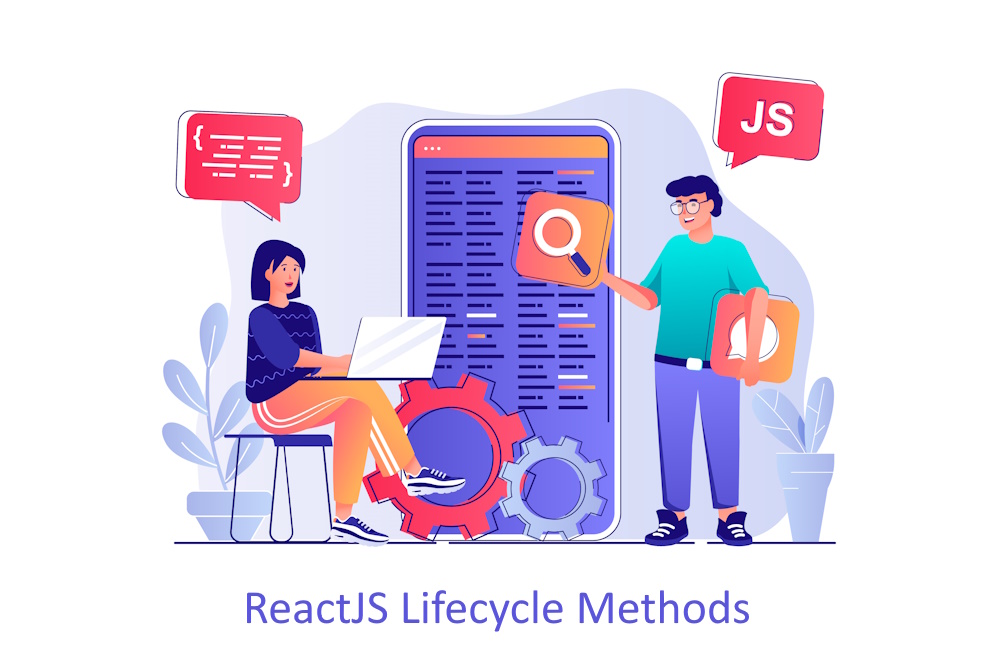Understanding lifecycle methods in ReactJS is crucial for building efficient web applications. These lifecycle methods govern the sequence of events from the creation of components to their destruction. They provide hooks where you can insert your code to perform actions at specific times during a component’s lifecycle.

Contents
Challenges of ReactJS Lifecycle Methods
- Managing complexity: As an application grows, the number of components increases, making it increasingly difficult to manage the complexity of different lifecycle methods.
- Understanding lifecycle order: The order in which lifecycle methods are executed can be confusing for beginners. It’s crucial to understand this order to prevent bugs and ensure the application functions as expected.
- Deprecation of lifecycle methods: Some lifecycle methods, such as `componentWillMount`, `componentWillReceiveProps`, and `componentWillUpdate`, are deprecated in newer versions of React, which can create challenges for maintaining older codebases.
- Optimization issues: Incorrect use of lifecycle methods can lead to unnecessary renderings and performance degradation.
- Asynchronous nature: React’s rendering process is asynchronous, which can lead to unexpected behavior if not handled correctly.
- Understanding when to use lifecycle methods: Not all lifecycle methods are needed in every component. It’s important to understand when and where to use each method for efficient coding.
- Transition to Hooks: With the introduction of Hooks in React 16.8, developers need to adapt to this new way of handling side effects and state, especially if they are used to class-based components and traditional lifecycle methods.
Component Mounting
The mounting phase is the stage where the component is being created and inserted into the DOM. It has four methods:
- constructor(): This method is called before the component is mounted. It’s used for initializing state and binding event handler methods.
- static getDerivedStateFromProps(): This method is called right before rendering. It’s used for syncing state from props.
- render(): This is the only compulsory method in a component lifecycle. It should remain pure, meaning that it does not interact with the browser.
- componentDidMount(): This method is called after a component is mounted. It’s where you cause side-effects, like API calls or subscriptions.
Component Updating
The update phase occurs when a component is being re-rendered due to changes to either its props or state. It consists of five methods:
- static getDerivedStateFromProps(): This method is called every time a component is updated and has the same functionality as during mounting.
- shouldComponentUpdate(): This method allows you to optimize performance. It may cancel updating process.
- render(): This method is called during mounting and updating. It’s called before componentDidUpdate().
- getSnapshotBeforeUpdate(): This method is called right before the most recently rendered output is committed to the DOM. It enables capturing some information from the DOM, like scroll position.
- componentDidUpdate(): This method is called immediately after updating. It is not called during the initial render.
Component Unmounting
The unmounting phase is the final phase where the component is removed from the DOM. It consists of one method:
componentWillUnmount(): This method is called immediately before a component is unmounted and destroyed. It’s used for cleanup activities like invalidating timers or cleaning up any DOM elements created in componentDidMount.
Understanding these lifecycle methods is key to utilizing ReactJS web development effectively. They provide a framework for organizing the logic in your components and ensure a smooth, efficient rendering process.
Benefits of ReactJS
- Declarative: ReactJS is declarative, making the code more readable and easier to debug. It designs simple views for each state in your application, and will efficiently update and render the right components when your data changes.
- Component-Based: ReactJS is built around components, promoting code reusability and separation of concerns. Each component works independently which makes it easier to test and maintain.
- Learn Once, Write Anywhere: With ReactJS, you can develop new features without rewriting existing code. It also renders on the server using Node, and it can power mobile apps using React Native.
- Rich Ecosystem: ReactJS has a rich ecosystem that includes tools, libraries, and extensions that make it easier to build and manage large scale applications.
- Performance Optimization: ReactJS uses a virtual DOM which reduces the load and performance bottlenecks in DOM manipulation.
- Strong Community: ReactJS has strong community support with a large number of contributors working to continuously improve it. This means you can find solutions to most of your problems quickly and efficiently.
Common Mistakes with Lifecycle Methods
- Invoking Methods Inside Render: One common mistake is invoking methods that change state inside the `render` method. This can lead to an infinite loop since every state change causes a re-render.
- Ignoring the Component Lifecycle: Developers sometimes neglect the component lifecycle and add code to incorrect lifecycle methods. This can lead to unnecessary re-rendering and performance issues.
- Misusing componentDidUpdate: Misusing `componentDidUpdate` can lead to an infinite loop if not handled properly. This method should not directly mutate state; instead, it should be used for side effects related to the props or state change.
- Not Cleaning Up in componentWillUnmount: Failing to clean up in `componentWillUnmount`, for example forgetting to clear intervals or event listeners, can lead to memory leaks and unexpected behavior.
Conclusion
Understanding and correctly utilizing ReactJS lifecycle methods is crucial for building efficient and bug-free applications. Avoiding the common mistakes highlighted above can help developers ensure smooth operation and optimal performance of their ReactJS applications.
Author Bio:
Arjun Solanki is a Business Growth Strategist at a Leading Software Development Company. He has experience in developing and executing digital strategies for large global brands in a variety of business verticals. Apart from working on a long-lasting relationship with customers and boost business revenue, he is also interested in sharing my knowledge on various technologies and its influence on businesses through effective blog posts and article writing.




